How to Book Wagyu in Tokyo – 2025 Guide
How to choose the right restaurant, book with confidence, and enjoy your Wagyu course without stress.
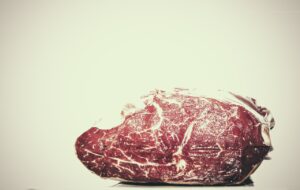
Introduction – Why Booking Wagyu in Tokyo
Can Be Confusing
Tokyo offers countless Wagyu dining experiences, from casual yakiniku joints to exclusive multi-course dinners. But with limited seats, language barriers, and booking systems unfamiliar to many travelers, choosing and reserving the right restaurant can be overwhelming.
This guide will help you:
- Understand the differences between types of Wagyu restaurants
- Choose the best reservation method
- Avoid common pitfalls
- Confidently book your ideal Wagyu meal
📖 First time booking Wagyu in Tokyo?
Start with our :Step-by-Step Booking Guide
Step 1 – Understand the Types of Wagyu
Restaurants in Tokyo
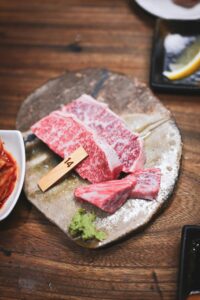
Yakiniku: Korean-style BBQ with sliced Wagyu

Thinly sliced raw Wagyu served with marinade (momi-dare), cooked by diners on charcoal or gas grills. Casual, fun, but quality varies.
Steakhouse: Western vs Japanese-style
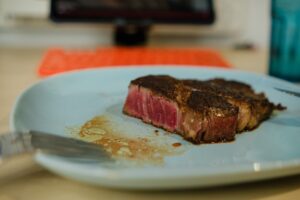
Western-style Wagyu steakhouses serve bread or pasta, while Japanese-style versions often come with rice. Both serve thicker cuts, often à la carte.
Sukiyaki: Sweet-simmered Wagyu
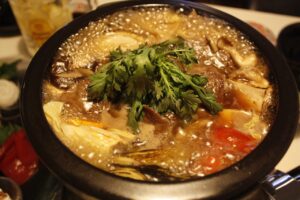
Kansai style: Meat is grilled on a hot plate, then simmered with vegetables in a sweet sauce.
Kanto style: All ingredients are simmered in a pot with sweet sauce, then dipped in raw egg.
Course-style dining (kaiseki, French, Italian)
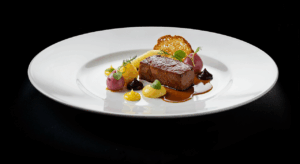
High-end restaurants offering full course meals centered around Wagyu. French/Italian-style courses often offer more creativity in Wagyu preparation beyond sukiyaki or steak.

When most people think of Wagyu, they picture thick ribbons of creamy white fat woven through bright red meat. This intense marbling—especially in A4 or A5-grade Marbled Wagyu—has become a global symbol of luxury and indulgence.
Step 2 – Choose the Right Reservation Method
Restaurant website (direct booking)
Many quality restaurants offer booking forms in English on their official site. Confirmation is typically by email.
Third-party platforms
Services like TableCheck, Pocket Concierge, and Omakase are common. They offer English interfaces and instant confirmations, but availability may be limited.
Hotel concierge or travel agent
Effective for luxury travelers, especially if language is a concern. These services may secure bookings even at fully booked restaurants.
Summary: Pros and Cons
Each method has trade-offs. Direct bookings offer more control and clarity, while platforms and concierges reduce stress.
Step 3 – When Should You Book?
(Timing & Planning Tips)

Peak tourist seasons and weekends
Popular areas like Shibuya, Shinjuku, Ueno, and Asakusa are often packed. Small, reputable restaurants tend to book out fast—especially during holidays and weekends.
Ideal booking window
For premium course restaurants, book at least 1–2 weeks in advance. For famous spots, even earlier.
Last-minute options
Some smaller restaurants still accept same-week bookings, especially on weekdays. Having flexibility helps.
Step 4 – What You’ll Need to Complete a Reservation
Basic information
Most bookings require:
- Number of guests
- Date and time
- Dietary restrictions (especially allergies)
- Contact email
Deposits or credit card holds
Many restaurants require either a credit card preauthorization or deposit (like ¥4,000 per guest) to confirm the reservation.
English-friendly forms
Increasingly common, but always double-check. When in doubt, use booking platforms or hotel concierge assistance.
Step 5 – Understand Japanese Reservation Etiquette
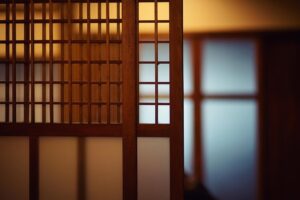
Cancellation and no-show policies
Strict. Some restaurants charge full course price for no-shows or late cancellations. Always check policies.
Dress code
Even upscale restaurants may not require formal attire, but avoid overly casual wear. Smart casual is usually ideal.
Allergies and special requests
Japanese restaurants may not always be prepared to accommodate allergies unless informed well in advance. Always mention them clearly when booking.
Step 6 – Booking Example: QUNIOMI
Wagyu Course Experience
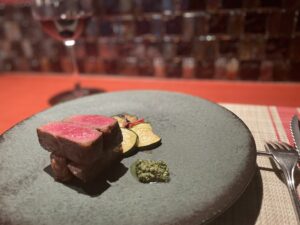
Curious how the booking process actually works in Tokyo?
Here’s a real example from QUNIOMI, a reservation-only lean Wagyu restaurant in Ebisu:
- Booking method: Fill out the online form (in English) on their official reservation page
- Confirmation: The restaurant replies via email to confirm availability
- Deposit: ¥4,000 per guest via Square link (sent in confirmation email)
- Finalization: Reservation is confirmed once the deposit is paid
- Cancellation policy: Free changes or cancellations up to 48 hours before your booking time
QUNIOMI focuses on flavor-forward lean Wagyu dishes in a French-inspired bistro setting. The chef’s “less is more” philosophy keeps dishes elegant and digestible.
👉 Explore the full Akaushi course at QUNIOMI
Bonus – Avoid These Booking Mistakes

- Using the wrong platform: Google Maps links sometimes redirect to unofficial sites or closed listings
- Overlooking time zones: Japan is GMT+9 – don’t miss confirmation emails due to delays
- Double-booking: Happens more often than you think. Confirm before booking elsewhere.
Conclusion – Plan Ahead, Eat Better
Tokyo’s best Wagyu restaurants—especially those offering curated course menus—are often small and book up quickly. That’s why planning ahead isn’t just smart; it’s essential for a smooth dining experience.
Whether you’re visiting for the first time or looking to try something new, we hope this guide helped you feel more confident about navigating Tokyo’s Wagyu dining scene.
If you’d like to see an actual example of how a reservation works at a lean Wagyu restaurant in Tokyo, you can take a look here:
👉 View a real Wagyu course reservation example (QUNIOMI)